Dynamic Response of Deep-Sea Trawl System during Towing Process
Abstract
1. Introduction
2. Modelling of the Trawl System
2.1. The Lumped Mass Model
2.2. Equivalent of Trawl Net
- (1)
- The effective area of the combined net is equal to the effective area before the combination.
- (2)
- The diameter of the strings of the combined net is equal to the hydrodynamic force on the net before the combination.
- (3)
- The quality of the combined net is the same as that before combination.
2.3. Modelling of the Two Trawl Systems in OrcaFlex
3. Validation
4. Results and Discussion
4.1. Dynamic Response of the Rigid Truss Trawl System
4.2. Dynamic Response of the Flexible Trawl System
5. Conclusions
- (1)
- During straight-line towing, the higher the speed, the greater the tension of the cable. The tension makes the cable straighten in the axial direction. Therefore, the bending deformation of the cable is very weak in straight-line towing. Due to the rigid truss, the shape of the trawl under different towing speeds is not much different.
- (2)
- During rotating towing, the tension of the cable changes abruptly in the initial stage, and then fluctuates periodically in the time domain. With the increase of towing speed, the overall outward floating distance of the trawl increases gradually. The change rate of the turning angle in the horizontal plane also increases, which leads to the increase of the outward floating distance of the trawl.
- (3)
- The change of the towing speed of the trawler will not affect the final shape of the trawl, but it will affect the stability of the cable tension. It is easier for the cable tension to achieve stability at a low towing speed. The towing speed of the trawler should be reduced as much as possible in terms of improving the stability of the cable tension.
Author Contributions
Funding
Institutional Review Board Statement
Informed Consent Statement
Data Availability Statement
Conflicts of Interest
References
- Atkinson, A.; Siegel, V.; Pakhomov, E.A.; Jessopp, M.J.; Loeb, V. A re-appraisal of the total biomass and annual production of Antarctic krill. Deep. Sea Res. Part I Oceanogr. Res. Pap. 2009, 56, 727–740. [Google Scholar] [CrossRef]
- Nicol, S.; Foster, J.; Kawaguchi, S. The fishery for Antarctic krill–recent developments. Fish Fish. 2012, 13, 30–40. [Google Scholar] [CrossRef]
- Cashion, T.; Al-Abdulrazzak, D.; Belhabib, D.; Derrick, B.; Divovich, E.; Moutopoulos, D.K.; Noël, S.; Palomares, M.L.D.; Teh, L.C.; Zeller, D. Reconstructing global marine fishing gear use: Catches and landed values by gear type and sector. Fish. Res. 2018, 206, 57–64. [Google Scholar] [CrossRef]
- Park, H.; Cho, B.; Ko, G.; Chang, H. The gear shape and cross section of sweep at mouth of a bottom trawl. J. Korean Soc. Fish. Ocean Technol. 2008, 44, 120–128. [Google Scholar] [CrossRef]
- Sala, A.; Lucchetti, A.; Palumbo, V.; Hansen, K. Energy saving trawl in Mediterranean demersal fisheries. In Maritime Industry, Ocean Engineering and Coastal Resources; Taylor & Francis Group: London, UK, 2008; pp. 961–964. [Google Scholar]
- Tang, M.; Dong, G.; Xu, T.; Zhao, Y.; Bi, C. Numerical simulation of the drag force on the trawl net. Turk. J. Fish. Aquat. Sci. 2017, 17, 1219–1230. [Google Scholar]
- Li, L.Z.; Chen, S.; Yang, J.L.; Liu, J.; Wu, Y.; Qu, T.C.; Rao, X.; Huang, H.L. Performance analysis of the four-panel mid-water trawl for Antarctic krill fishery. J. Fish. Sci. China 2017, 24, 893–901. [Google Scholar]
- Wileman, D.A.; Hansen, K. Estimation of the Drag of Trawls of Known Geometry; Danish Fisheries Technology Institute: Hirtshals, Denmark, 1988. [Google Scholar]
- Somerton, D.A.; Munro, P.T.; Weinberg, K.L. Whole-gear efficiency of a benthic survey trawl for flatfish. Fish. Bull. 2007, 105, 278–291. [Google Scholar]
- Priour, D. FEM modeling of flexible structures made of cables, bars and nets. In Maritime Transportation and Exploitation of Ocean and Coastal Resources; Taylor & Francis Group: London, UK, 2005; pp. 1285–1292. [Google Scholar]
- Mulvany, N.; Tu, J.Y.; Chen, L.; Anderson, B. Assessment of two-equation turbulence modelling for high Reynolds number hydrofoil flows. Int. J. Numer. Methods Fluids 2004, 45, 275–299. [Google Scholar] [CrossRef]
- Kristiansen, T.; Faltinsen, O.M. Modelling of current loads on aquaculture net cages. J. Fluids Struct. 2012, 34, 218–235. [Google Scholar] [CrossRef]
- Khaled, R.; Priour, D.; Billard, J. Numerical optimization of trawl energy efficiency taking into account fish distribution. Ocean Eng. 2012, 54, 34–45. [Google Scholar] [CrossRef]
- Khaled, R.; Priour, D.; Billard, J. Cable length optimization for trawl fuel consumption reduction. Ocean Eng. 2013, 58, 167–179. [Google Scholar] [CrossRef]
- Lee, J.; Yoon, H.; Park, Y.; Choi, K.; Lee, C.; Shim, D.; Park, S. Design and fabrication of fluid flow characteristic controllable trawl door using a trailing edge flap. J. Mech. Sci. Technol. 2019, 33, 5623–5630. [Google Scholar] [CrossRef]
- Thierry, N.N.B.; Tang, H.; Achile, N.P.; Xu, L.; Hu, F.; You, X. Comparative study on the full-scale prediction performance of four trawl nets used in the coastal bottom trawl fishery by flume tank experimental investigation. Appl. Ocean Res. 2020, 95, 102022. [Google Scholar] [CrossRef]
- Thierry, N.N.B.; Tang, H.; Liuxiong, X.; You, X.; Hu, F.; Achile, N.P.; Kindong, R. Hydrodynamic performance of bottom trawls with different materials, mesh sizes, and twine thicknesses. Fish. Res. 2020, 221, 105403. [Google Scholar] [CrossRef]
- You, X.; Hu, F.; Takahashi, Y.; Shiode, D.; Dong, S. Resistance performance and fluid-flow investigation of trawl plane netting at small angles of attack. Ocean Eng. 2021, 236, 109525. [Google Scholar] [CrossRef]
- Wan, R.; Jia, M.; Guan, Q.; Huang, L.; Cheng, H.; Zhao, F.; He, P.; Hu, F. Hydrodynamic performance of a newly-designed Antarctic krill trawl using numerical simulation and physical modeling methods. Ocean Eng. 2019, 179, 173–179. [Google Scholar] [CrossRef]
- Wan, R.; Guan, Q.; Huang, L.; Li, Z.; Zhou, C.; Wang, L.; Jia, M. Effects of otter board and cable length on hydrodynamic performance of Antarctic krill trawl system. Ocean Eng. 2021, 236, 109408. [Google Scholar] [CrossRef]
- Chen, Y.; Yao, Y. Numerical modelling of trawl net considering fluid-structure interaction based on hybrid volume method. Turk. J. Fish. Aquat. Sci. 2019, 20, 39–50. [Google Scholar]
- Guan, Q.; Zhu, W.; Zhou, A.; Wang, Y.; Tang, W.; Wan, R. Numerical and Experimental Investigations on Hydrodynamic Performance of a Newly Designed Deep Bottom Trawl. Front. Mar. Sci. 2022, 9, 891046. [Google Scholar] [CrossRef]
- Nyatchouba Nsangue, B.T.; Tang, H.; Xu, L.; Hu, F.; Dong, S.; Achille, N.P.; Zou, B. Comparison between physical model testing and numerical simulation using two-way fluid-structure interaction approach of new trawl design for coastal bottom trawl net. Ocean Eng. 2021, 233, 109112. [Google Scholar] [CrossRef]
- Martin, T.; Kamath, A.; Wang, G.; Bihs, H. Modelling Open Ocean Aquaculture Structures Using CFD and a Simulation-Based Screen Force Model. J. Mar. Sci. Eng. 2022, 10, 332. [Google Scholar] [CrossRef]
- Vu, M.T.; Van, M.; Bui, D.H.P.; Do, Q.T.; Huynh, T.; Lee, S.; Choi, H. Study on dynamic behavior of unmanned surface vehicle-linked unmanned underwater vehicle system for underwater exploration. Sensors 2020, 20, 1329. [Google Scholar] [CrossRef]
- Vu, M.T.; Choi, H.; Kang, J.; Ji, D.; Jeong, S. A study on hovering motion of the underwater vehicle with umbilical cable. Ocean Eng. 2017, 135, 137–157. [Google Scholar]
- Vu, M.T.; Choi, H.; Nhat, T.Q.M.; Nguyen, N.D.; Lee, S.; Le, T.; Sur, J. Docking assessment algorithm for autonomous underwater vehicles. Appl. Ocean Res. 2020, 100, 102180. [Google Scholar] [CrossRef]
- Vu, M.T.; Choi, H.; Nguyen, N.D.; Kim, S. Analytical design of an underwater construction robot on the slope with an up-cutting mode operation of a cutter bar. Appl. Ocean Res. 2019, 86, 289–309. [Google Scholar] [CrossRef]
- Vu, M.T.; Jeong, S.; Choi, H.; Oh, J.; Ji, D. Study on down-cutting ladder trencher of an underwater construction robot for seabed application. Appl. Ocean Res. 2018, 71, 90–104. [Google Scholar] [CrossRef]
- Vu, M.T.; Choi, H.; Kim, J.; Tran, N.H. A study on an underwater tracked vehicle with a ladder trencher. Ocean Eng. 2016, 127, 90–102. [Google Scholar] [CrossRef]
- Zhang, D.; Yan, J.; Zhu, K. Hydrodynamic characteristics of deep sea station cage under different failure modes of mooring cables. J. Guangdong Ocean Univ. 2022, 42, 107–116. [Google Scholar]
- Zhang, D.; Bai, Y.; Soares, C.G. Dynamic analysis of an array of semi-rigid “sea station” fish cages subjected to waves. Aquac. Eng. 2021, 94, 102172. [Google Scholar] [CrossRef]
- Sen, D. A study on sensitivity of maneuverability performance on the hydrodynamic coefficients for submerged bodies. J. Ship Res. 2000, 44, 186–196. [Google Scholar] [CrossRef]
- Kristiansen, D.; Faltinsen, O.M. Non-linear wave-induced motions of cylindrical-shaped floaters of fish farms. Proc. Inst. Mech. Eng. Part M J. Eng. Marit. Environ. 2009, 223, 361–375. [Google Scholar] [CrossRef]
- Orcina. OrcaFlex Manual 2015. Available online: http://www.orcina.com/SoftwareProducts/OrcaFlex/Validation/index/.pdf (accessed on 1 January 2015).
- Suzuki, K.; Takagi, T.; Shimizu, T.; Hiraishi, T.; Yamamoto, K.; Nashimoto, K. Validity and visualization of a numerical model used to determine dynamic configurations of fishing nets. Fish. Sci. 2003, 69, 695–705. [Google Scholar] [CrossRef]
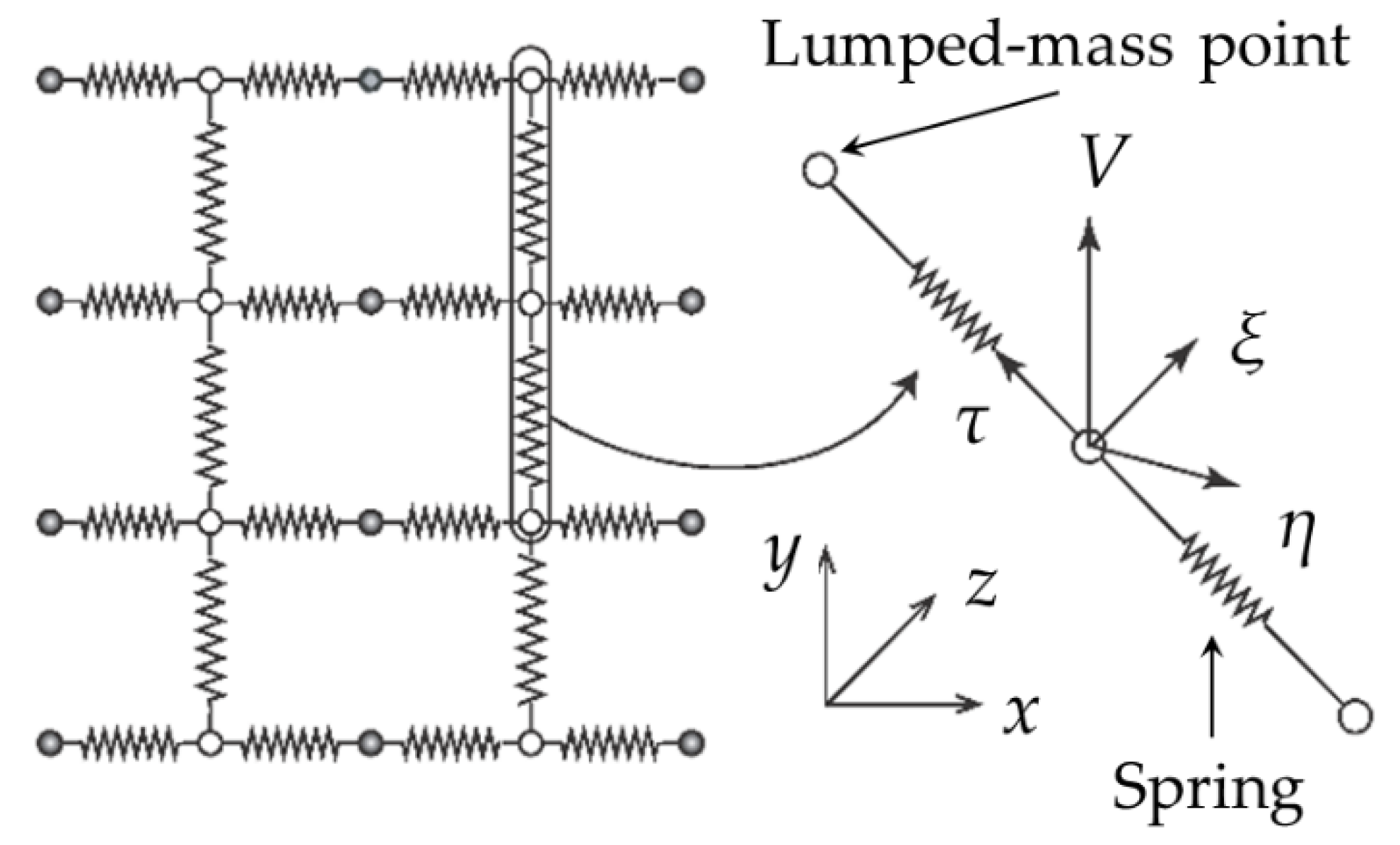

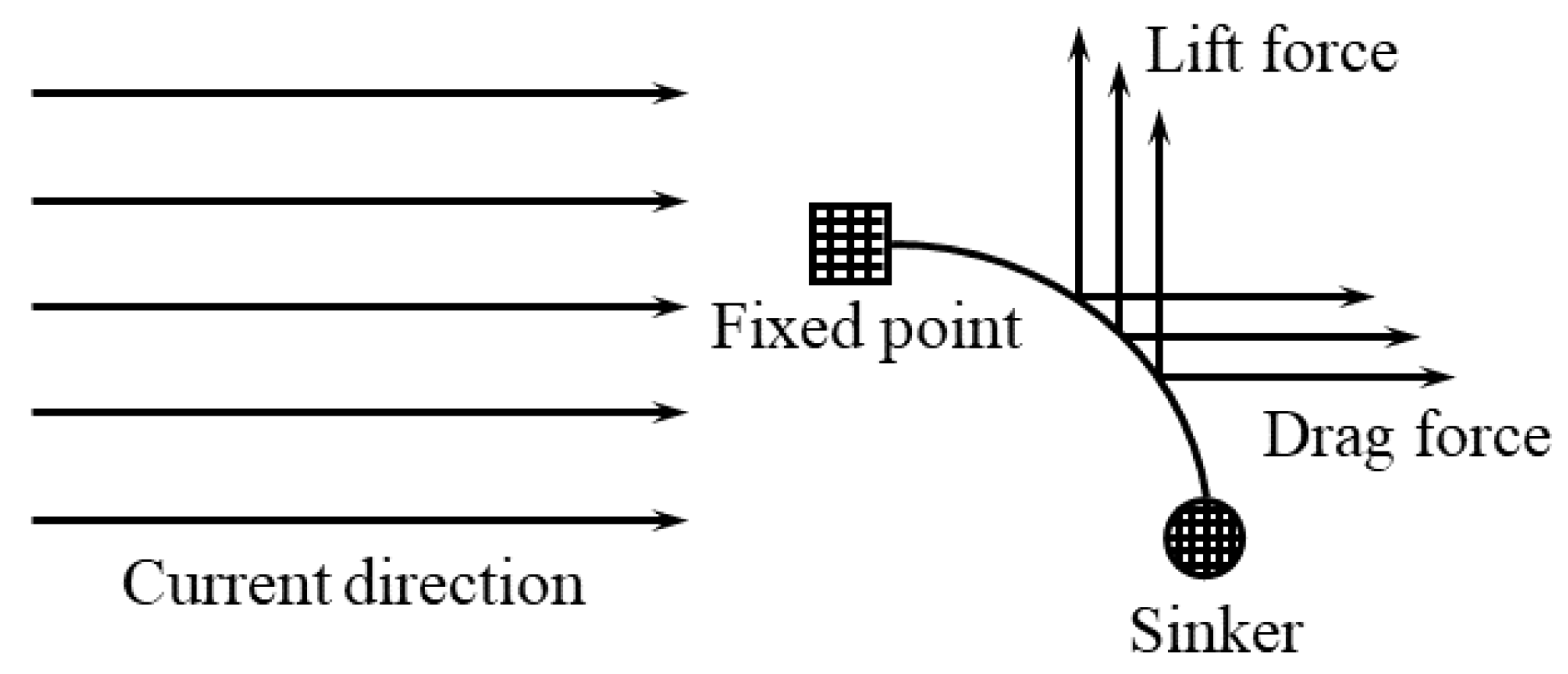
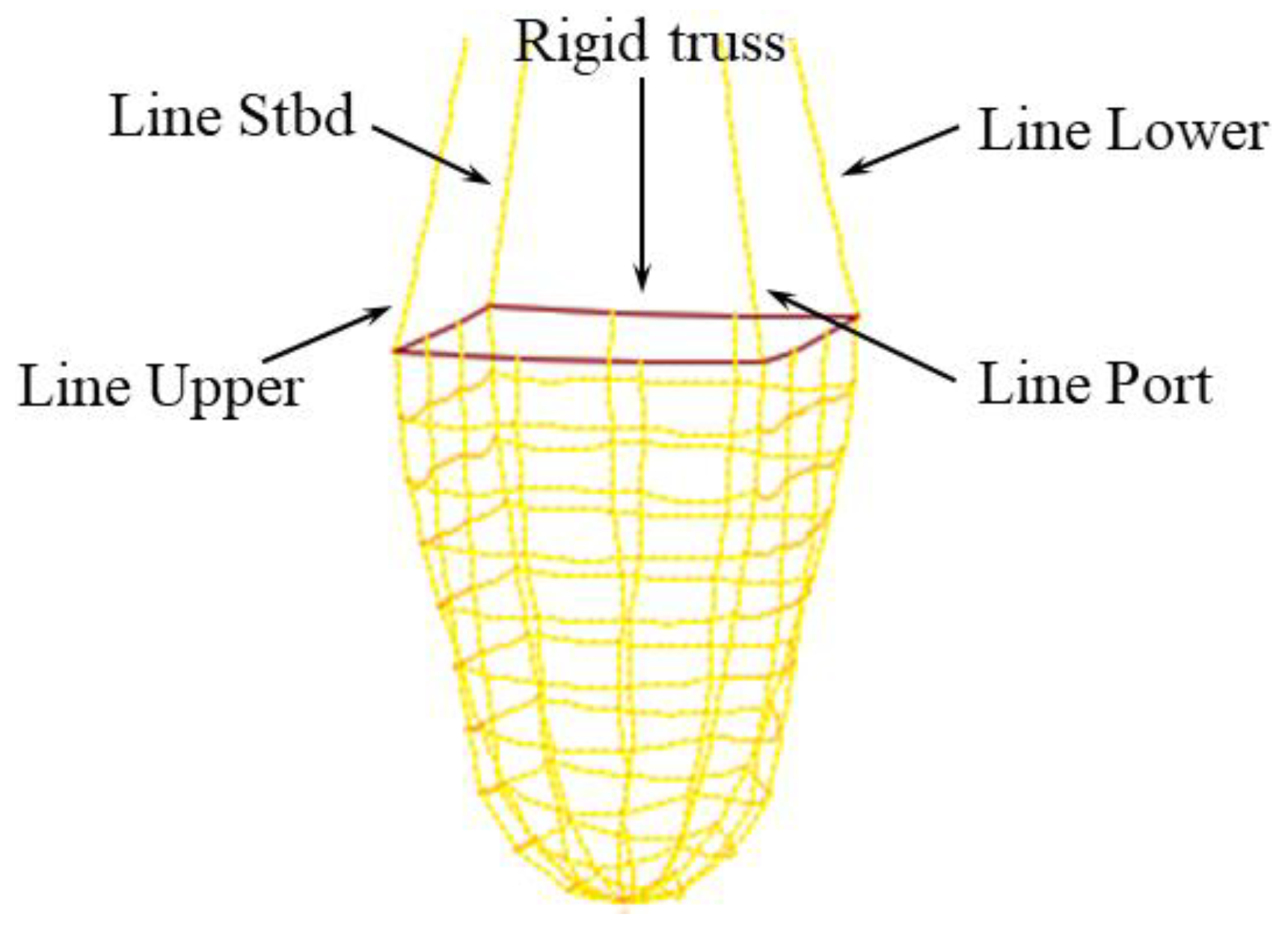

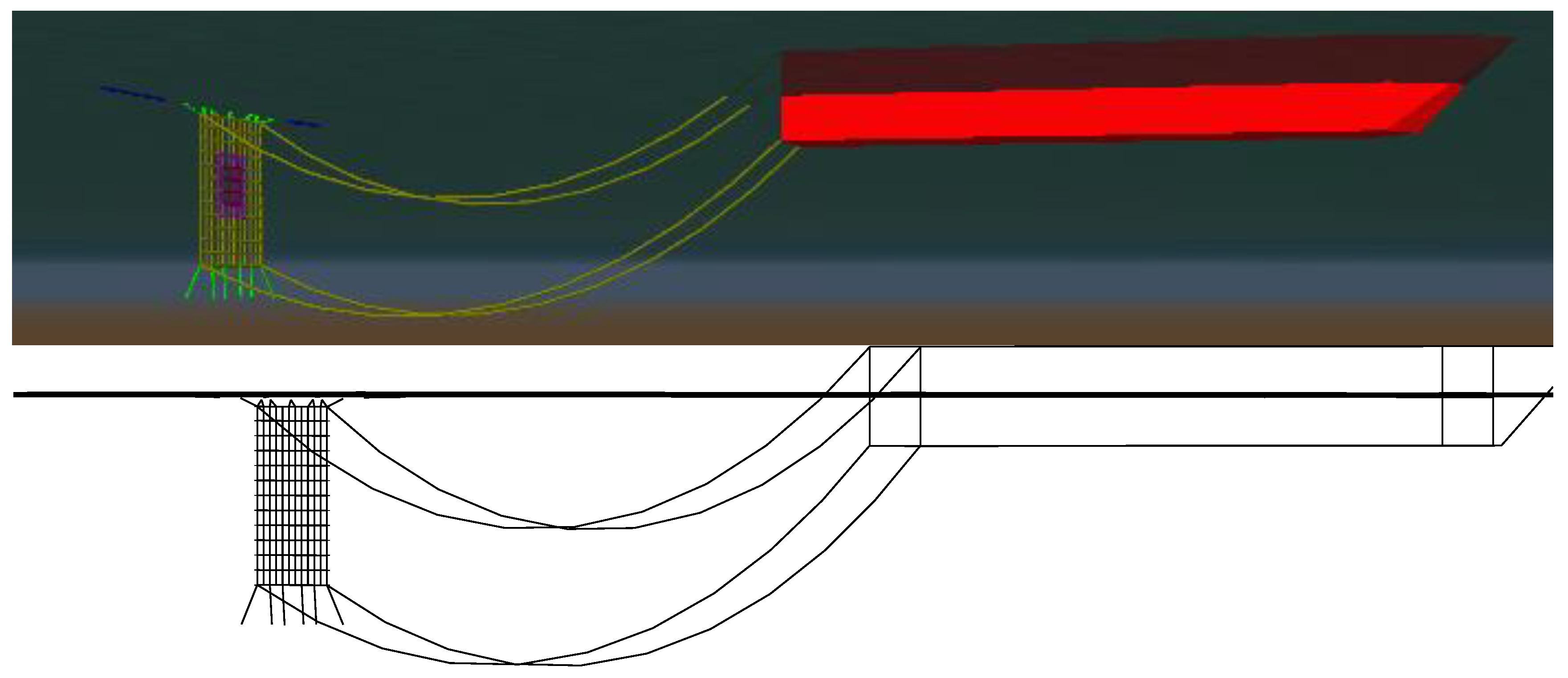
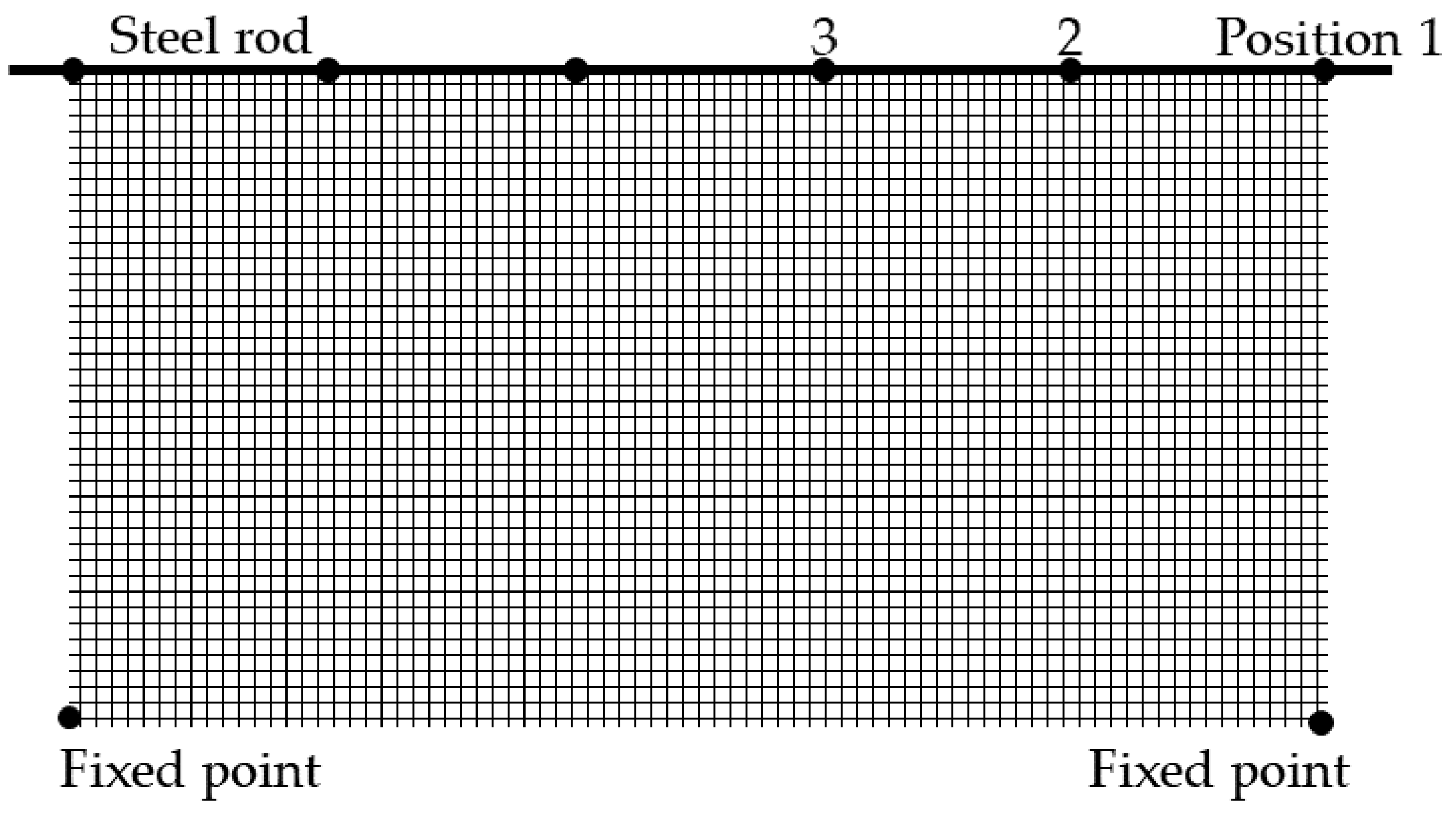





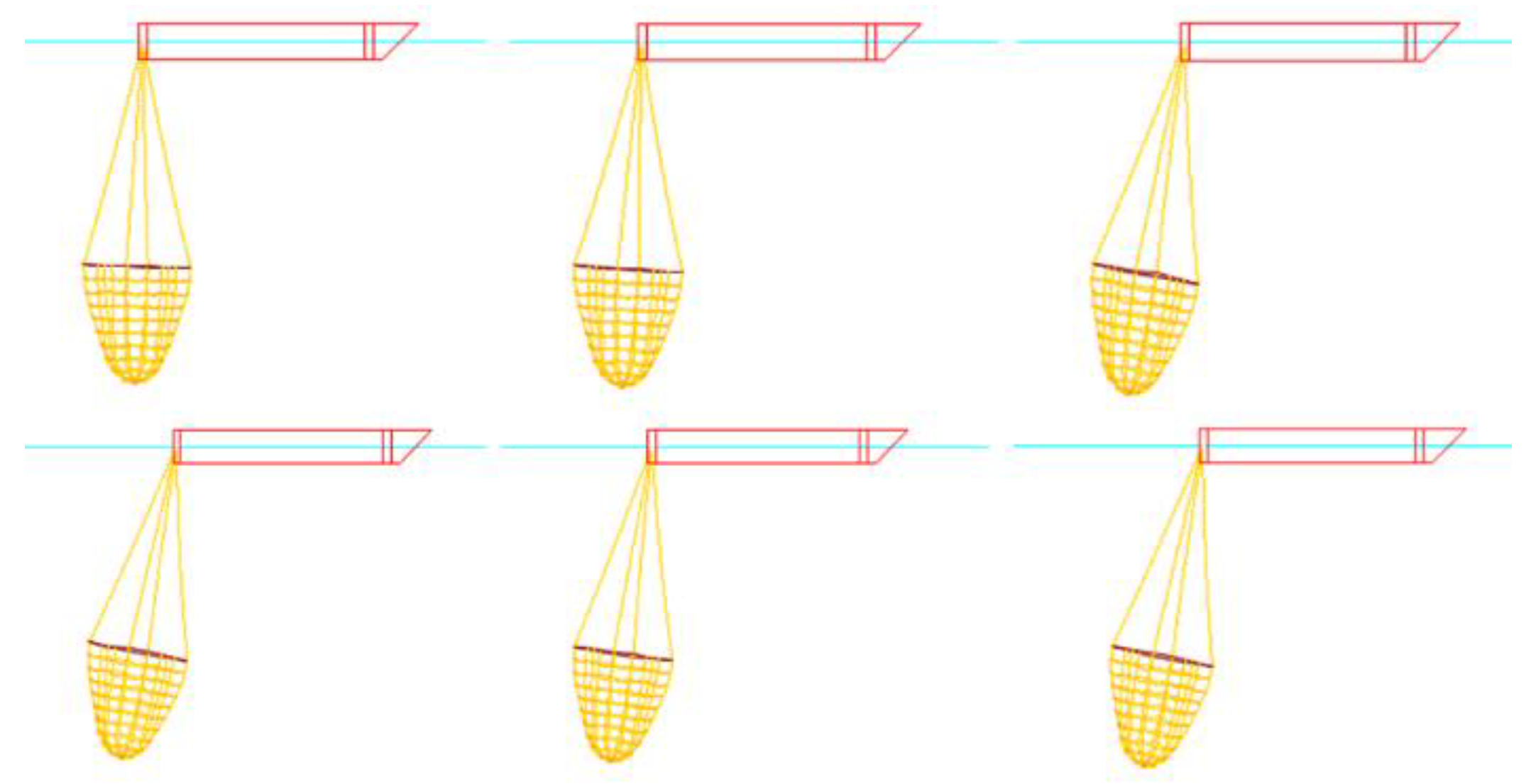


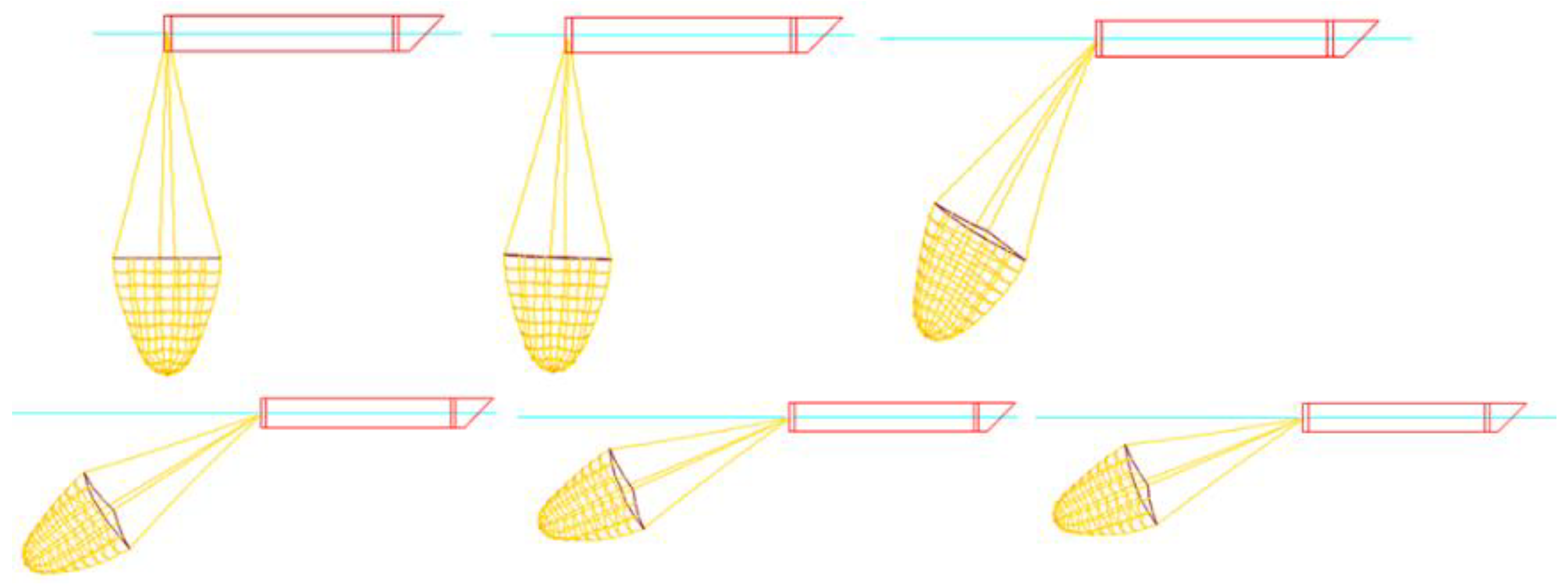

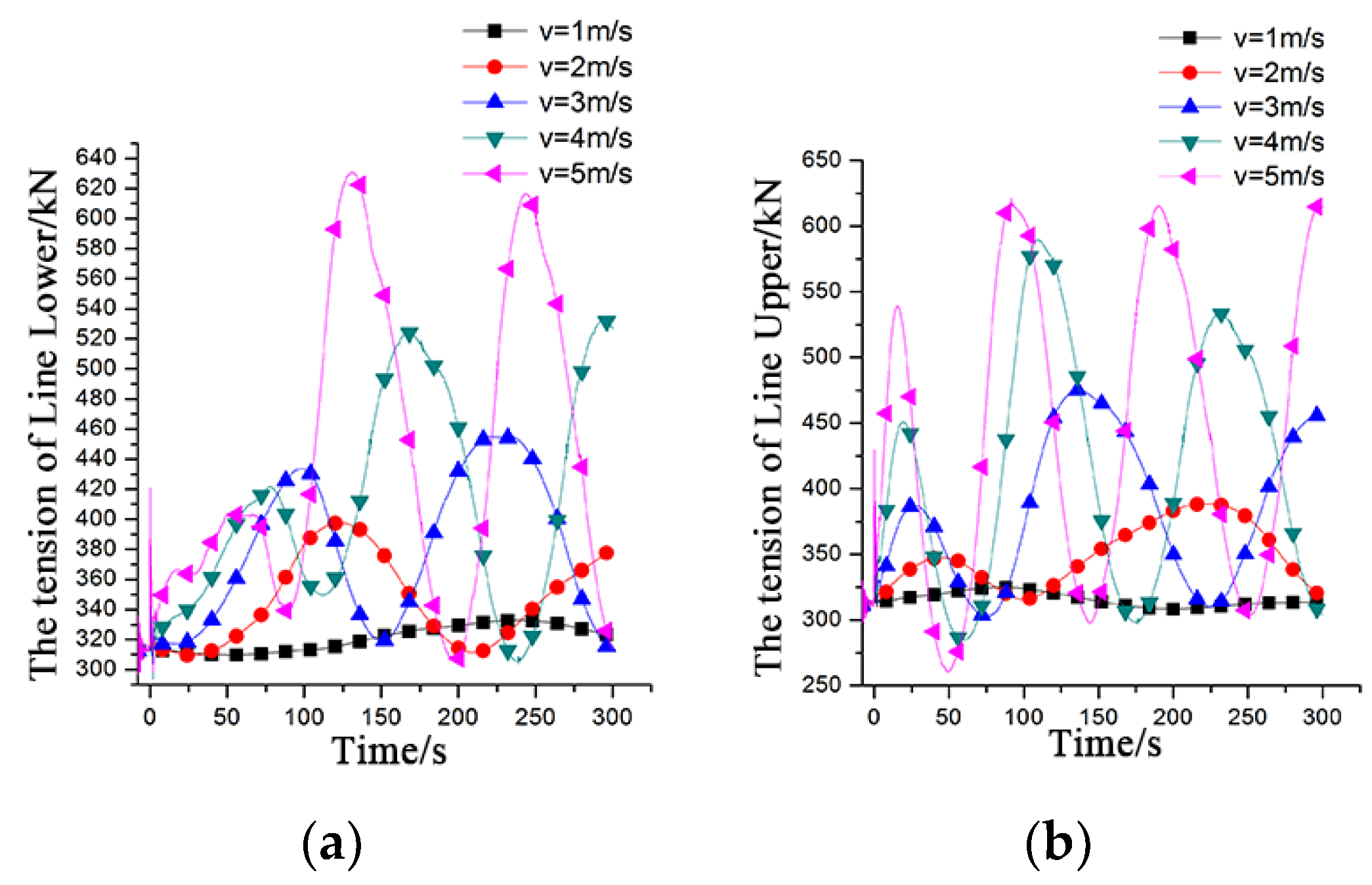
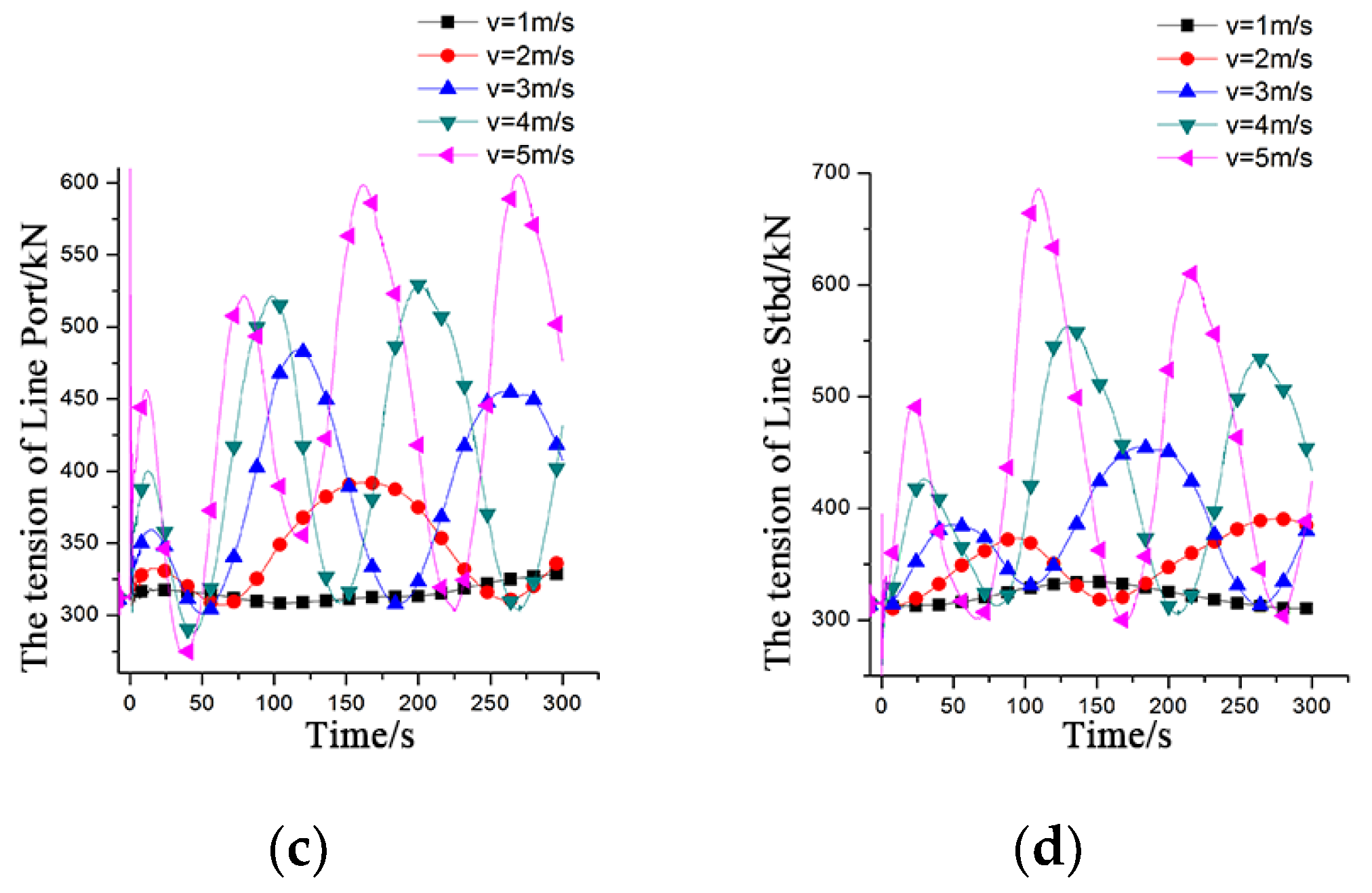






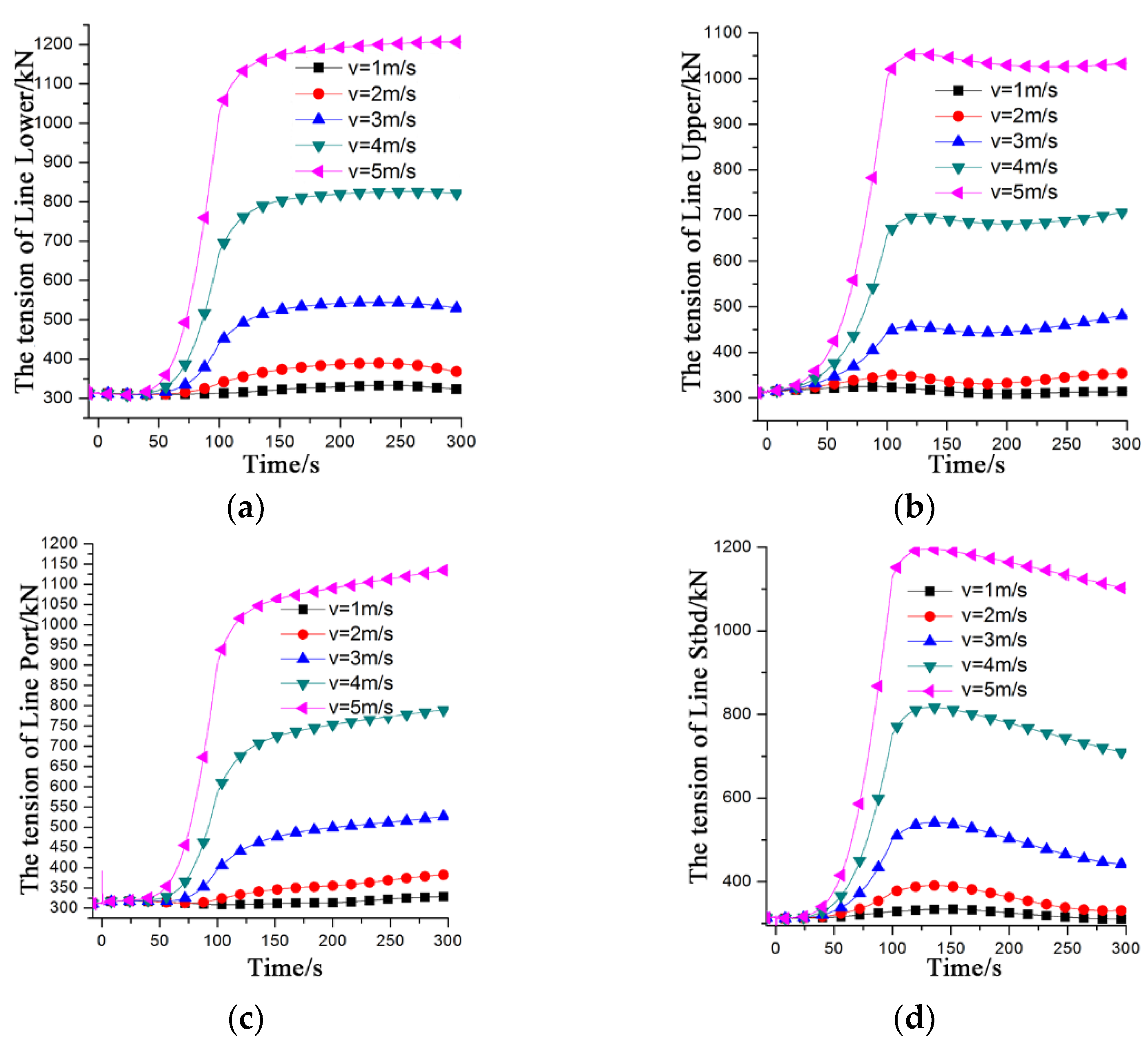





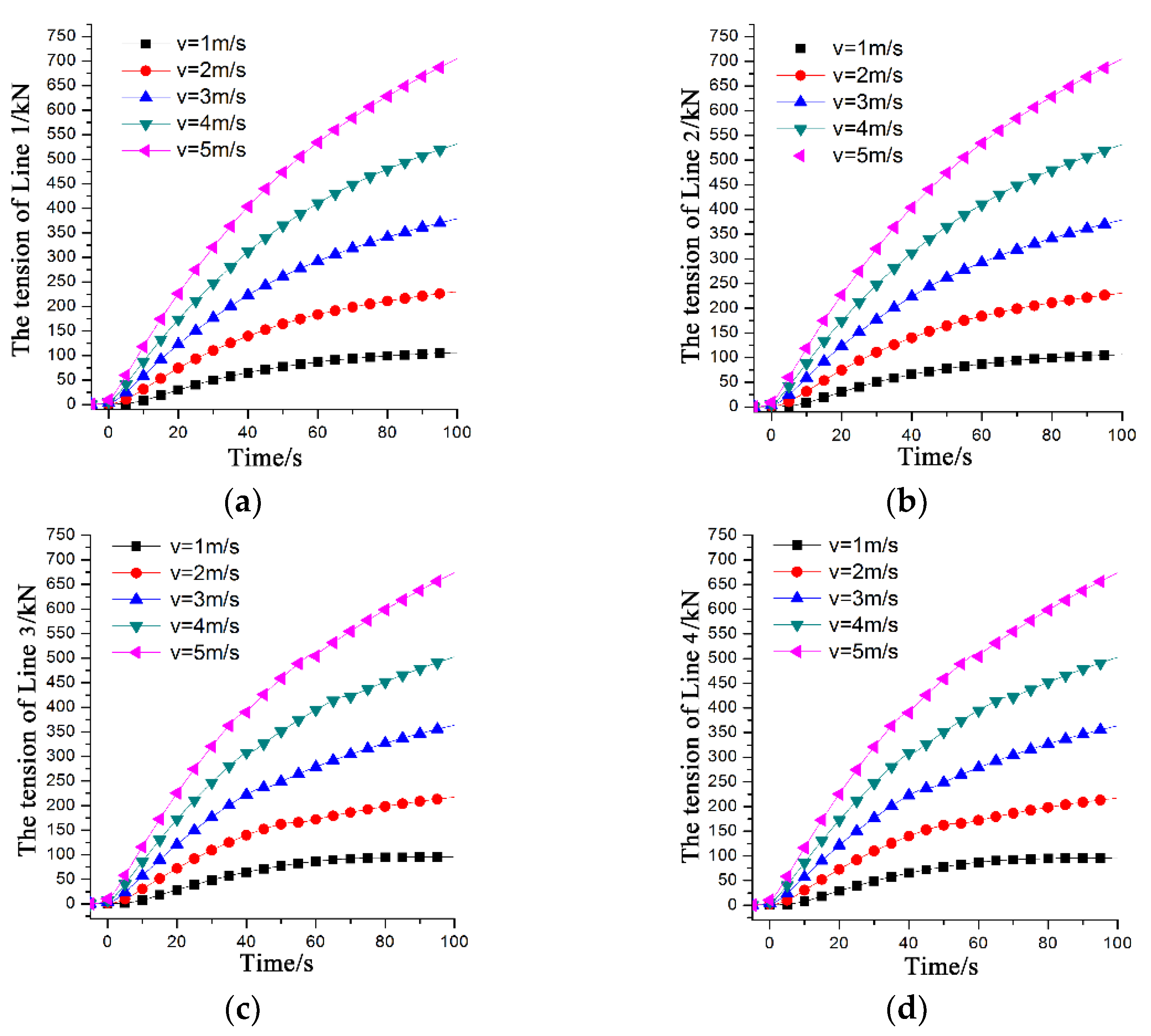
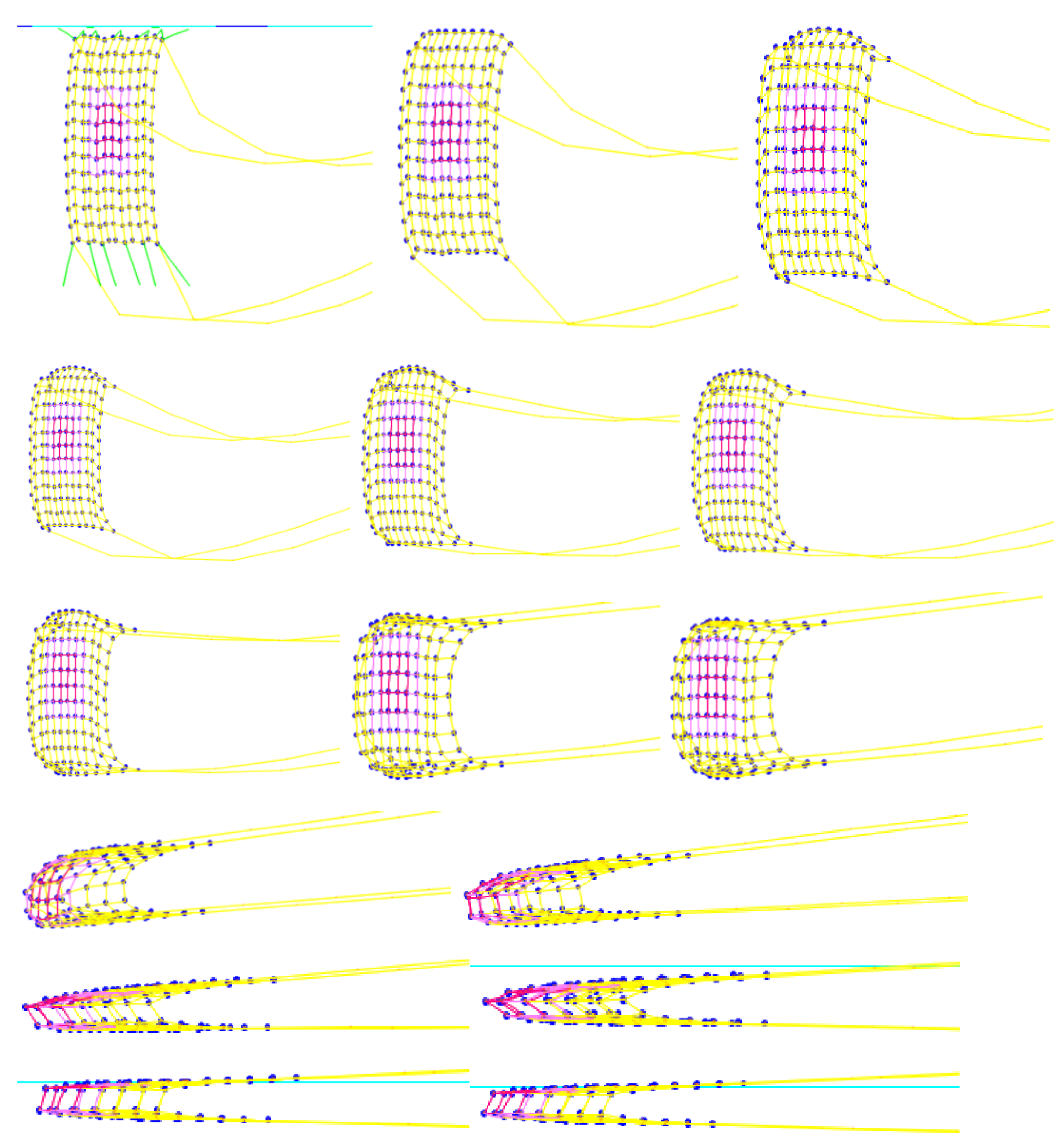
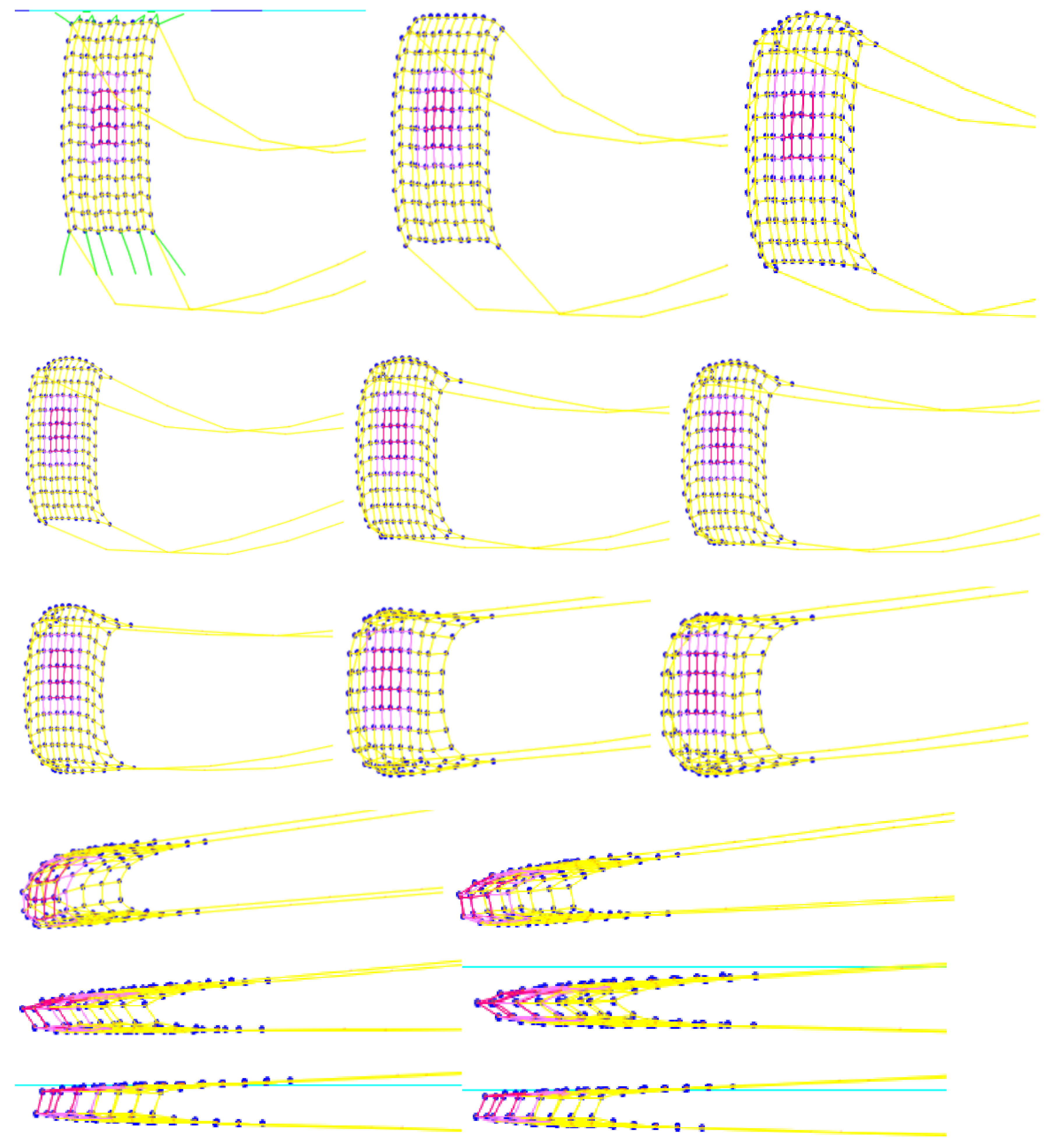

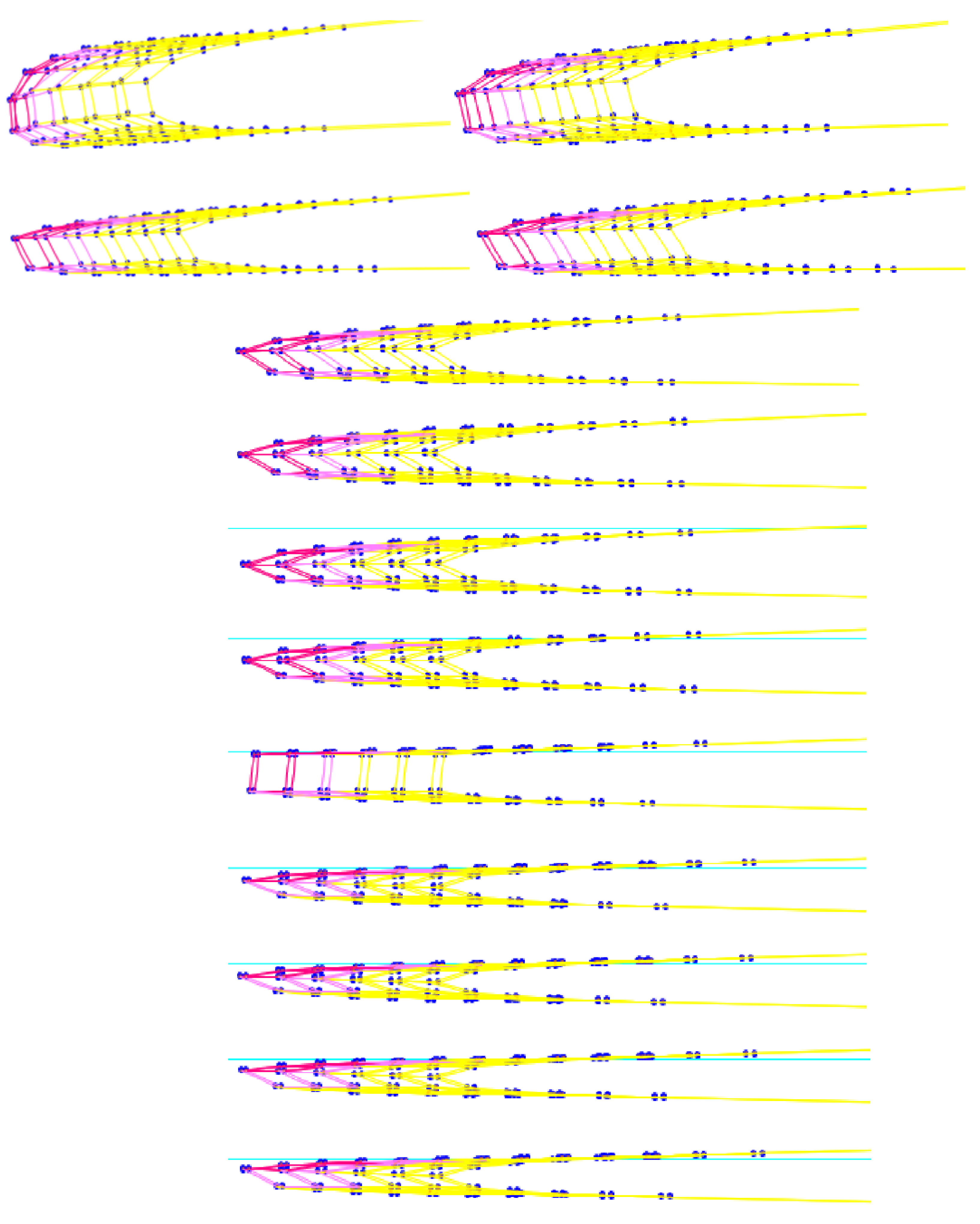
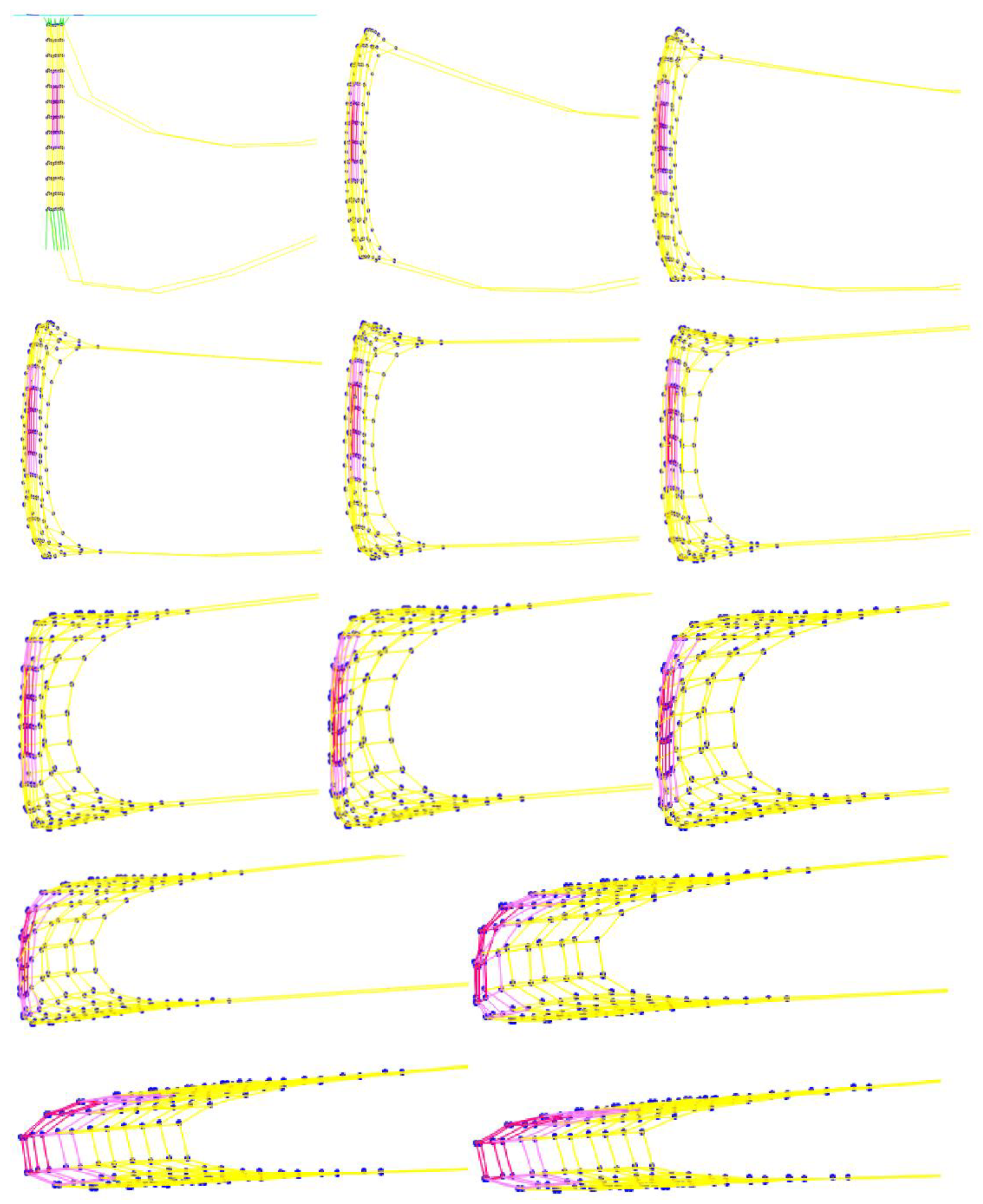
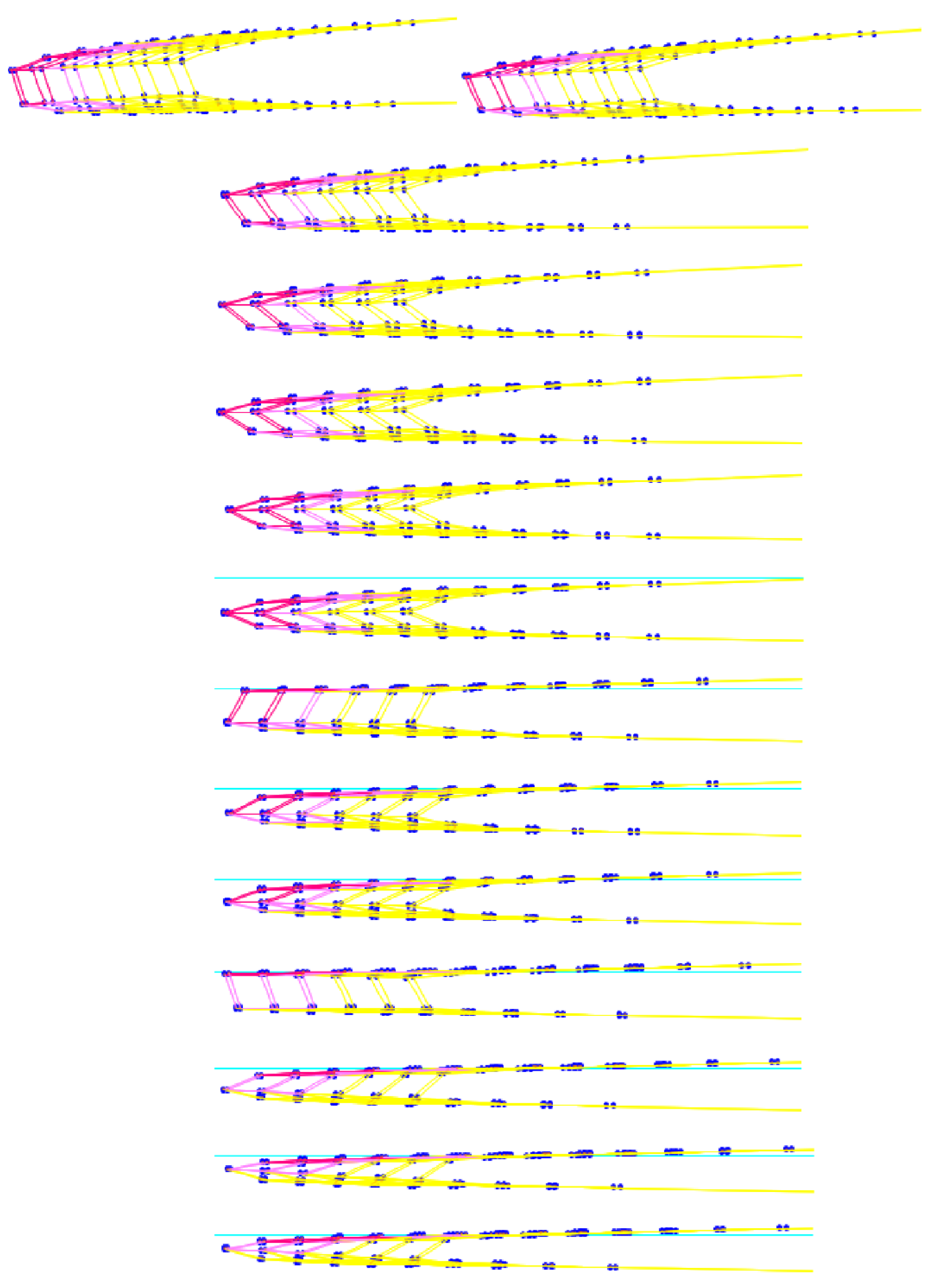

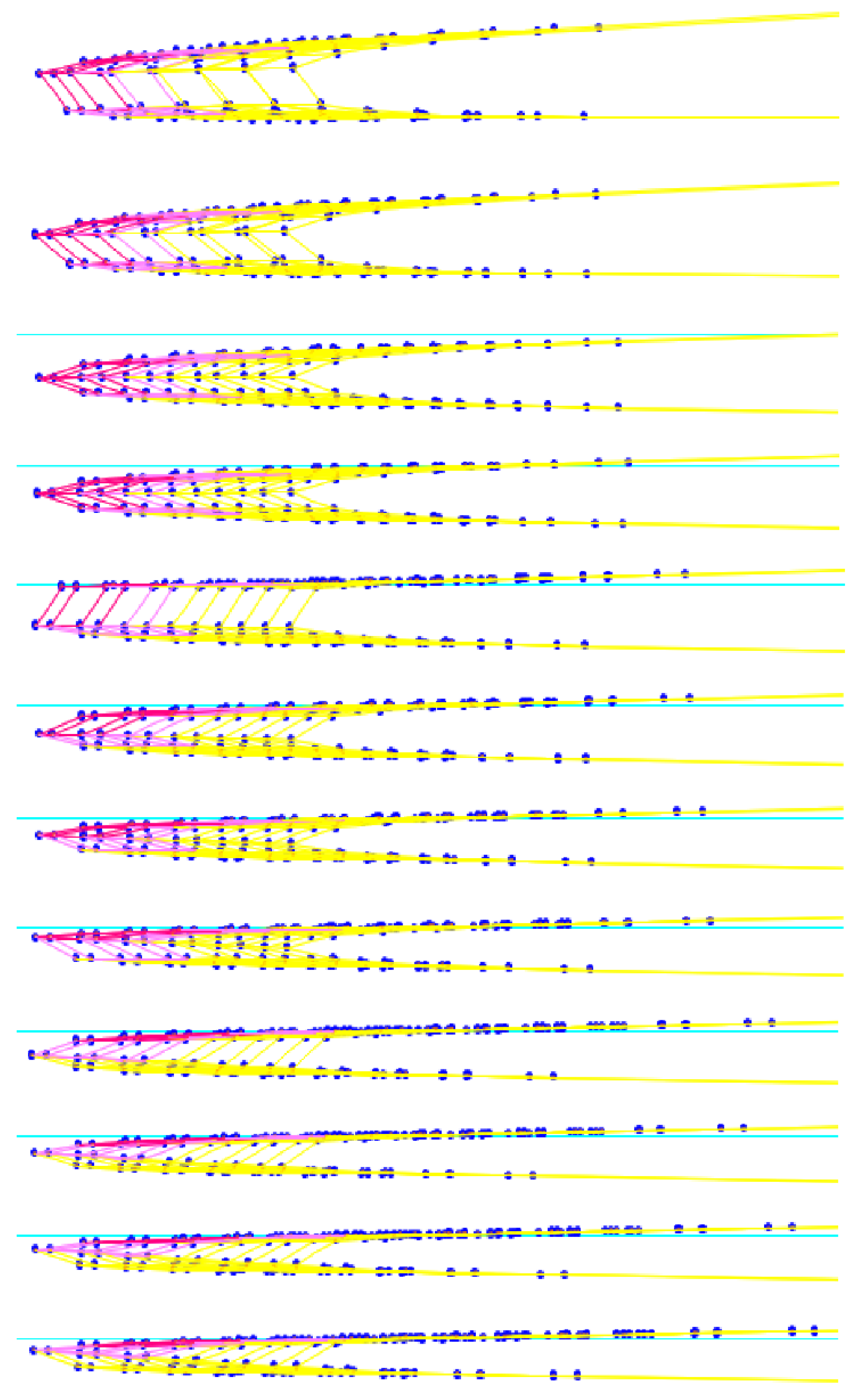
| Net Type | Twine Diameter/mm | Mesh Size/mm | Total Mass/g |
|---|---|---|---|
| A | 0.348 | 75 | 9.91 |
| B | 0.348 | 50 | 14.68 |
| C | 0.348 | 40 | 22.31 |
Disclaimer/Publisher’s Note: The statements, opinions and data contained in all publications are solely those of the individual author(s) and contributor(s) and not of MDPI and/or the editor(s). MDPI and/or the editor(s) disclaim responsibility for any injury to people or property resulting from any ideas, methods, instructions or products referred to in the content. |
© 2023 by the authors. Licensee MDPI, Basel, Switzerland. This article is an open access article distributed under the terms and conditions of the Creative Commons Attribution (CC BY) license (https://creativecommons.org/licenses/by/4.0/).
Share and Cite
Zhang, D.; Zhao, B.; Zhu, K.; Jiang, H. Dynamic Response of Deep-Sea Trawl System during Towing Process. J. Mar. Sci. Eng. 2023, 11, 145. https://doi.org/10.3390/jmse11010145
Zhang D, Zhao B, Zhu K, Jiang H. Dynamic Response of Deep-Sea Trawl System during Towing Process. Journal of Marine Science and Engineering. 2023; 11(1):145. https://doi.org/10.3390/jmse11010145
Chicago/Turabian StyleZhang, Dapeng, Bowen Zhao, Keqiang Zhu, and Haoyu Jiang. 2023. "Dynamic Response of Deep-Sea Trawl System during Towing Process" Journal of Marine Science and Engineering 11, no. 1: 145. https://doi.org/10.3390/jmse11010145
APA StyleZhang, D., Zhao, B., Zhu, K., & Jiang, H. (2023). Dynamic Response of Deep-Sea Trawl System during Towing Process. Journal of Marine Science and Engineering, 11(1), 145. https://doi.org/10.3390/jmse11010145






